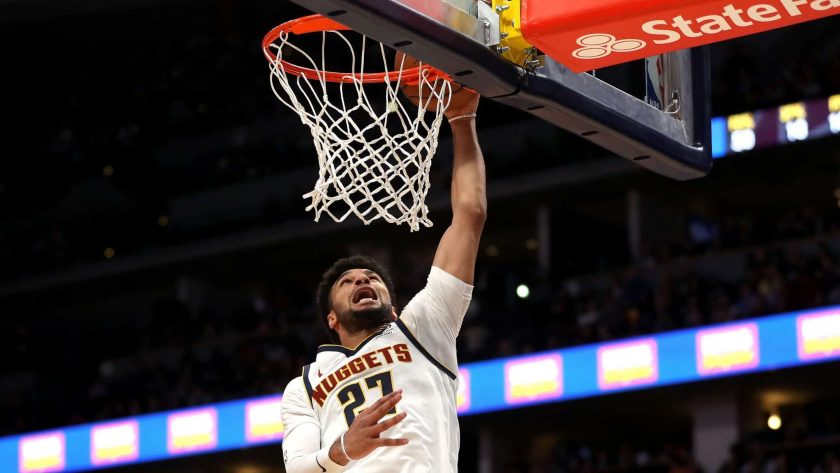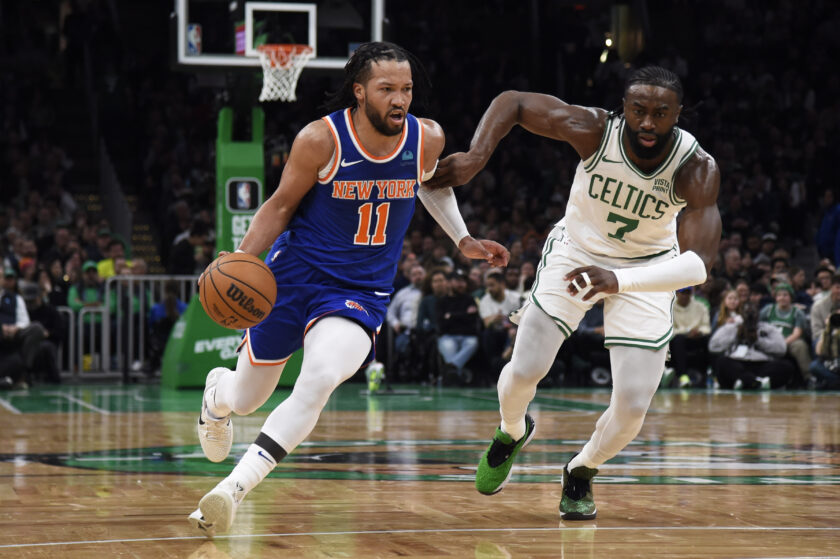New York Knicks: Drafting the all-time ‘what if…’ team

When it comes to these players, it’s hard not to wonder what could have been with the New York Knicks in a different situation.
[sc name=”josh-benjamin-banner” ]Sorry, New York Knicks fans, but there isn’t going to be basketball for a while.
Utah Jazz stars Rudy Gobert and Donovan Mitchell both tested positive for coronavirus, and the NBA suspended its season in response. Other leagues like MLB and the NHL have followed suit, with MLB even pushing back Opening Day by two weeks. March Madness, set to begin next week, has been canceled entirely.
This means instead of watching sports, we can only look at past highlights to get our fix. Last spring, I even offered a list of binge-able Knicks videos to watch online. Sure, the fix is fleeting, but Knicks fans can’t be choosy.
Which got me thinking: What if certain things broke differently for the Knicks throughout history? What if a draft pick lived up to a certain potential? Suppose bad luck didn’t hit some Knicks players with the force of a Stone Cold Stunner?
The Knicks are no stranger to this feeling, and yours truly felt like doing a historical deep dive. That said, if the Knicks could put together a lineup of “what if” players, these five would fit the bill perfectly.
Point guard: Micheal Ray Richardson

The story of Micheal Ray Richardson is a sad and disappointing one. The Knicks took him with the fourth overall pick out of Montana in the 1978 NBA Draft. Fan favorite and future Hall of Famer Walt “Clyde” Frazier had been traded away the year before, so Richardson was the anticipated heir.
Richardson came off the bench as a rookie before exploding on the New York basketball scene the following year. He led the league in assists and steals in his second season. In his first four years in the league, all with New York, he averaged 14.2 points, 7.1 assists, 6.0 rebounds, and 2.6 steals per game.
Unfortunately for Richardson, the Knicks only saw one playoff berth during his four-year tenure. In 1982, he was traded to the Golden State Warriors for Bernard King. New York made the playoffs each of the next two years, but King ultimately dealt with injuries and the trade became a wash.
Richardson, meanwhile, didn’t have a happy ending either. He struggled with drugs off the court his whole career and lasted only four more years himself before being banned by the league. He was reinstated two years later and opted to continue playing abroad.
Though the King trade wasn’t entirely awful for the Knicks, maybe keeping and building around Richardson could have yielded fruitful results for both parties.
Shooting guard: Jamal Murray

Of all the draft picks the Knicks have traded away over the years, this is one they’d love to have back. The Denver Nuggets selected Murray out of Kentucky with the No. 7 pick in 2016, in a pick swap from the Carmelo Anthony trade.
And the deal has paid off in spades for Denver. Murray just turned 23 and has continually improved as a scorer. He is currently averaging 18.8 points per game and has shot a respectable 35.8% from three for his career.
Murray isn’t an out-of-this-world impact player like Steph Curry, but Denver improved its win total in each of his first three seasons. The Nuggets were the No. 2 seed in the Western Conference last year and had 43 wins when play was suspended.
The Knicks, meanwhile, can only watch Murray in Denver as they continually search for a high-energy scorer of their own.
Small forward: Kenny Walker

One year after selecting Ewing with the first overall pick, the Knicks made Walker the No. 5 pick in 1986. Dubbed “Sky” for his legendary dunking abilities, Walker averaged 21.4 points over his last two years at Kentucky. Paired with Ewing, he was expected to be the next key piece of the Knicks’ rebuilding puzzle.
Walker then struggled for five years, and through no fault of his own. The New York Knicks went through five different head coaches in that span and Walker’s role constantly changed. He bounced between starting and coming off the bench before struggling to find regular playing time.
Walker would go on to play in Europe for two years before making a brief NBA return, but he was out of the league again at just 30 years old. Had the Knicks not constantly run the coaching carousel, maybe he could have developed better.
Power forward: Antonio McDyess

No New York Knicks fan, executive, or even player could have predicted how much Antonio McDyess would blow up in the team’s face. During the 2002 draft, the Knicks traded Marcus Camby, Mark Jackson, and the rights to Brazilian big man Nené just to land McDyess.
There was just one problem. Though McDyess averaged 17.6 points and 8.7 rebounds for his career at the time of the trade, he was fresh off a serious knee injury. Still, he was just 28 years old and had bounce-back potential.
Well, that never happened. McDyess re-injured his knee in the final minutes of an exhibition game that fall and missed the entire 2002-03 season. He played in 18 games the following year before being traded for Stephon Marbury and was never the same.
Was Antonio McDyess going to be a dominant 20-10 player in a Knicks uniform? Probably not, as he only averaged 11.3 points and 5.5 boards in 10 games the year before. Still, had he been healthy, McDyess definitely would have made the young Knicks a better team.
Center: Frédéric Weis

Weis is a sore subject for a lot of Knicks fans, and rightfully so. The team selected the 7-foot-2 Frenchman with the No. 15 pick in the 1999 NBA Draft, clearly seeing him as Ewing’s heir apparent. Adding to the controversy was New York passing on St. John’s star and native New Yorker Ron Artest, who the Chicago Bulls picked right after Weis was off the board.
Except, Weis never signed with the Knicks after the draft. In fact, according to a 2015 piece from Sam Borden of the New York Times, the Knicks didn’t really do a great job of making him feel welcome. Coach Jeff Van Gundy was curt with him, and fans weren’t shy about preferring Artest.
Weis remained in Europe and is now best known for being dunked on by Vince Carter in the 2000 Olympics. Meanwhile, Artest enjoyed a 17-year career and won a championship ring in 2010. He changed his name to Metta World Peace in 2011 and finally suited up with the Knicks in 2013.
Maybe New York shouldn’t have drafted Weis at all. Perhaps the Knicks organization should have just treated him better from the start. Either way, just what could have been had Weis suited up for the Knicks remains one of the game’s greatest unsolved mysteries.
Josh Benjamin has been a staff writer at ESNY since 2018. He has had opinions about everything, especially the Yankees and Knicks. He co-hosts the “Bleacher Creatures” podcast and is always looking for new pieces of sports history to uncover, usually with a Yankee Tavern chicken parm sub in hand.





